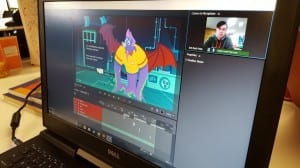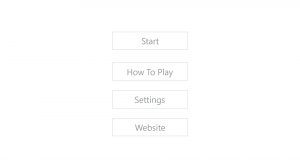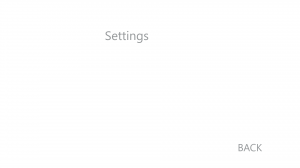Today we have been experimenting with Construct 2 and we have made a basic demo of part of the first level.
We are using our scene, character and pick-up item and have programmed the game to recognise the character picking up the item, which then triggers a sprite (in this case the locked door) to disappear – note, this sprite is invisible and the idea is that when destroyed it will be replaced by an open door – In this scenario, the open door which spawns is another invisible sprite, just to the right of the door set to ‘solid’ so that we can see it exists and works.
In all, once the images have been compiled it will run as follows:
Player runs into RAM
RAM ‘destroys’ closed door – which in turn spawns open door in place
Player runs into open door to progress.
For the purpose of making sure we choose the best fitting software/platform for our needs we will also be taking a look at Canvas for HTML5 and writing up a post on it shortly.
– Ryan





